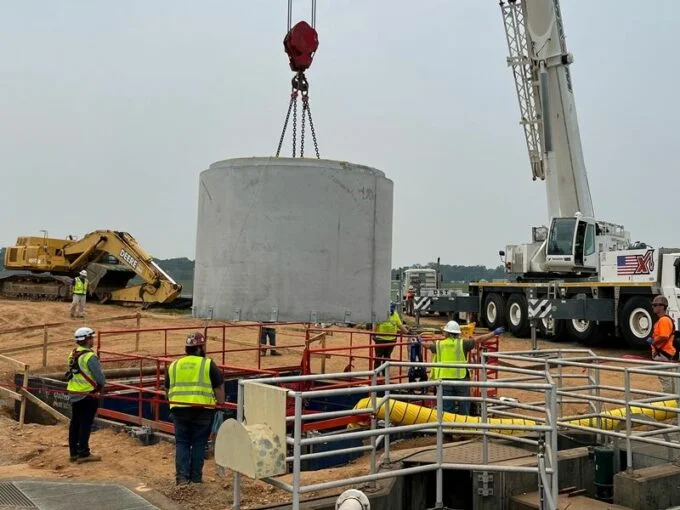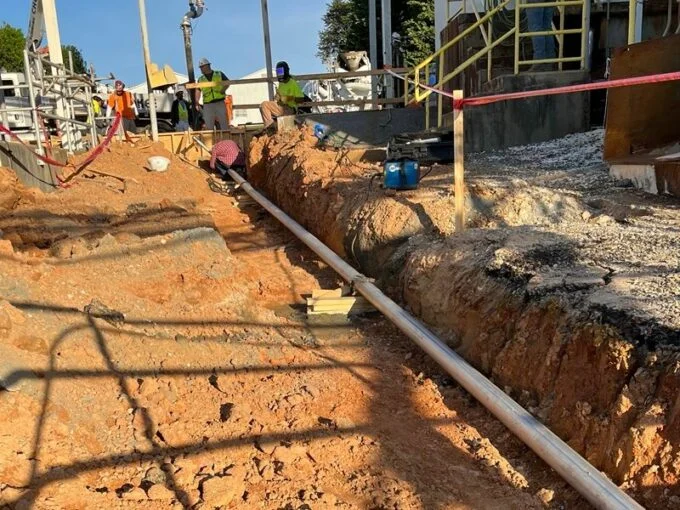SME’s client occupies and operates a large plant and its wastewater treatment systems. In recent decades, the plant has seen a significant decrease in population and wastewater flows, and an increased need to rehabilitate aging, outdated, and oversized wastewater treatment infrastructure.
The client and their partner have decided to regionalize the plant’s sanitary wastewater treatment systems by connecting wastewater from the plant to the local county sewage system and publicly owned treatment works (POTW) for treatment. The client retained SME to provide wastewater engineering and environmental consulting services to support all phases of the County Wastewater Connection (Tie-On) Project.
The Tie-On Project included installation of a new wastewater lift station, force main, and gravity sewer to establish the sewer connection to the County system; modifications to the client’s Sanitary Treatment Plant (STP) facility to bypass existing treatment operations and discharge wastewater to the County; and elimination of the direct discharge of treated wastewater from the client’s permitted wastewater outfall.
The Tie-On addresses critical needs at the client’s STP facility, stemming from aging equipment and oversized treatment units, to ensure that sanitary wastewater treatment for the plant is reliable and capable of meeting current and future wastewater treatment regulations.
SME worked closely with the client to provide:
- A comprehensive study to assess feasibility of the Tie-On and identify foreseeable implications, requirements, and costs
- An Environmental Assessment and Finding of No Significant Impact (FONSI) for the Tie-On and alternatives per all local, state, and federal regulation agency requirements
- Environmental permitting applications, regulatory coordination, and stakeholder communications for the Tie-On
- Engineering design for multiple phases of construction for the Tie-On, and closure plan for demolition of the STP facility, and
- Construction oversight services.

